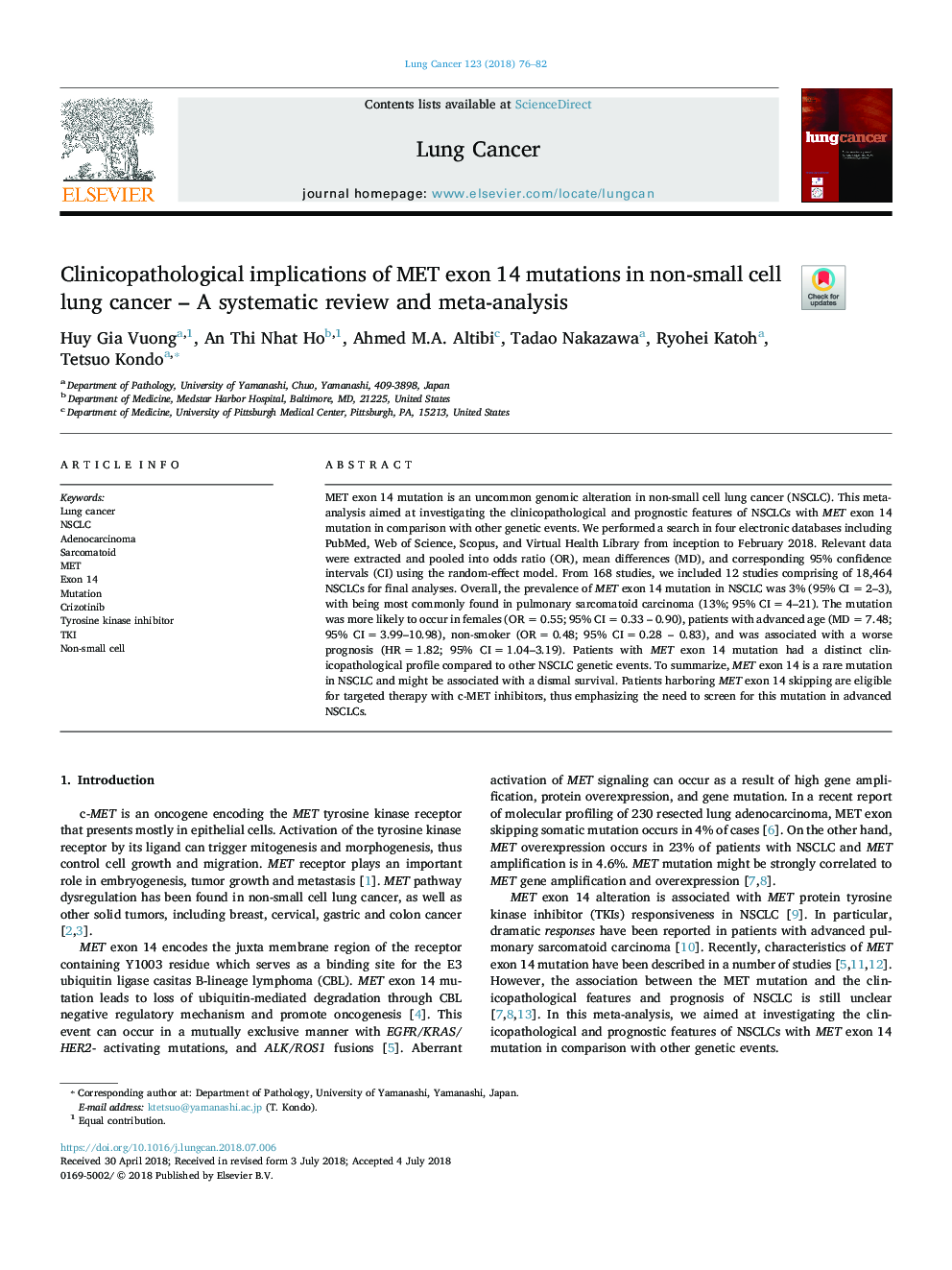| Article ID | Journal | Published Year | Pages | File Type |
|---|---|---|---|---|
| 8453604 | Lung Cancer | 2018 | 7 Pages |
Abstract
MET exon 14 mutation is an uncommon genomic alteration in non-small cell lung cancer (NSCLC). This meta-analysis aimed at investigating the clinicopathological and prognostic features of NSCLCs with MET exon 14 mutation in comparison with other genetic events. We performed a search in four electronic databases including PubMed, Web of Science, Scopus, and Virtual Health Library from inception to February 2018. Relevant data were extracted and pooled into odds ratio (OR), mean differences (MD), and corresponding 95% confidence intervals (CI) using the random-effect model. From 168 studies, we included 12 studies comprising of 18,464 NSCLCs for final analyses. Overall, the prevalence of MET exon 14 mutation in NSCLC was 3% (95% CIâ¯=â¯2-3), with being most commonly found in pulmonary sarcomatoid carcinoma (13%; 95% CIâ¯=â¯4-21). The mutation was more likely to occur in females (ORâ¯=â¯0.55; 95% CIâ¯=â¯0.33 - 0.90), patients with advanced age (MDâ¯=â¯7.48; 95% CIâ¯=â¯3.99-10.98), non-smoker (ORâ¯=â¯0.48; 95% CIâ¯=â¯0.28 - 0.83), and was associated with a worse prognosis (HRâ¯=â¯1.82; 95% CIâ¯=â¯1.04-3.19). Patients with MET exon 14 mutation had a distinct clinicopathological profile compared to other NSCLC genetic events. To summarize, MET exon 14 is a rare mutation in NSCLC and might be associated with a dismal survival. Patients harboring MET exon 14 skipping are eligible for targeted therapy with c-MET inhibitors, thus emphasizing the need to screen for this mutation in advanced NSCLCs.
Keywords
Related Topics
Life Sciences
Biochemistry, Genetics and Molecular Biology
Cancer Research
Authors
Huy Gia Vuong, An Thi Nhat Ho, Ahmed M.A. Altibi, Tadao Nakazawa, Ryohei Katoh, Tetsuo Kondo,
